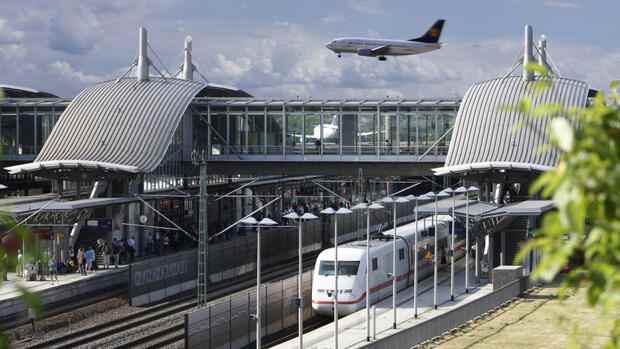Who is the bigger climate polluter? There are many factors to consider when evaluating, not just CO2 emissions.
(Photo: EB STOCK)
Merchants know the difference between full and marginal costs. Marginal cost is the cost of producing one additional unit, full cost is the total cost of the business. Only those who cover the latter make a profit. Earning only the marginal cost means certain ruin.
What sounds banal is often forgotten when it comes to climate protection. Example: the climate impact of different modes of transport. Train travel is considered good and flying bad. No wonder that the new federal government is aiming for a significant expansion of the rail network and climate activists are calling for an immediate ban on domestic flights. This is justified with around five times the CO2 emissions per passenger kilometer for domestic flights compared to using the train.
But the calculation is wrong. Because it only considers the marginal costs, i.e. the carbon dioxide emissions caused by the specific journey, but not the system costs, i.e. the CO2 emissions that arose when the railway tracks were produced from steel and concrete, the bridges and tunnels built, the necessary were in order for the journey to take place. But only if you take these into account do you arrive at the full costs of transport in tons of CO2.
Around 1.2 million additional passenger kilometers must be covered per kilometer of railway line
The dimension of the neglected CO2 emissions is gigantic, as a study by the University of St. Gallen calculates. Steel production for one kilometer of track causes 240 tons of CO2 and one kilometer of railway tunnel causes 27,000 tons of CO2.
Top jobs of the day
Find the best jobs now and
be notified by email.
According to this, around 1.2 million additional passenger kilometers must be covered per kilometer of rail route so that the full CO2 cost balance corresponds to that of air travel. As soon as tunnels have to be built, the project can no longer be justified with climate protection.
Daniel Stelter is the founder of the discussion forum beyond the obvious, which specializes in strategy and macroeconomics, as well as a management consultant and author. Every Sunday his podcast goes online at www.think-bto.com.
(Photo: Robert Recker/ Berlin)
This is also shown by the example “Stuttgart 21”. Even 20 years after completion, one kilogram of carbon dioxide will still be produced per station user before any transport even takes place. That doesn’t matter for existing infrastructure, but not if massive investments are to be made in new infrastructure. For example, the city of Berlin is currently building new tram lines, which may be more comfortable from the user’s point of view, but have a poorer total CO2 cost balance compared to buses.
Instead of turning the whole of Germany into a construction site for climate protection and actually damaging the climate, we should make better use of the existing infrastructure – railway lines, roads and airports. Calculations show that digitization alone could allow up to 35 percent more trains to travel on the existing network. Disadvantage from the point of view of politics: Such measures are effective, but are not suitable for photo ops.
Therefore, it should remain with expensive and useless symbolic politics. Like the call for flight bans that are neither justified nor contribute to climate protection.
More: Aviation – Airlines are desperately looking for the climate solution.
